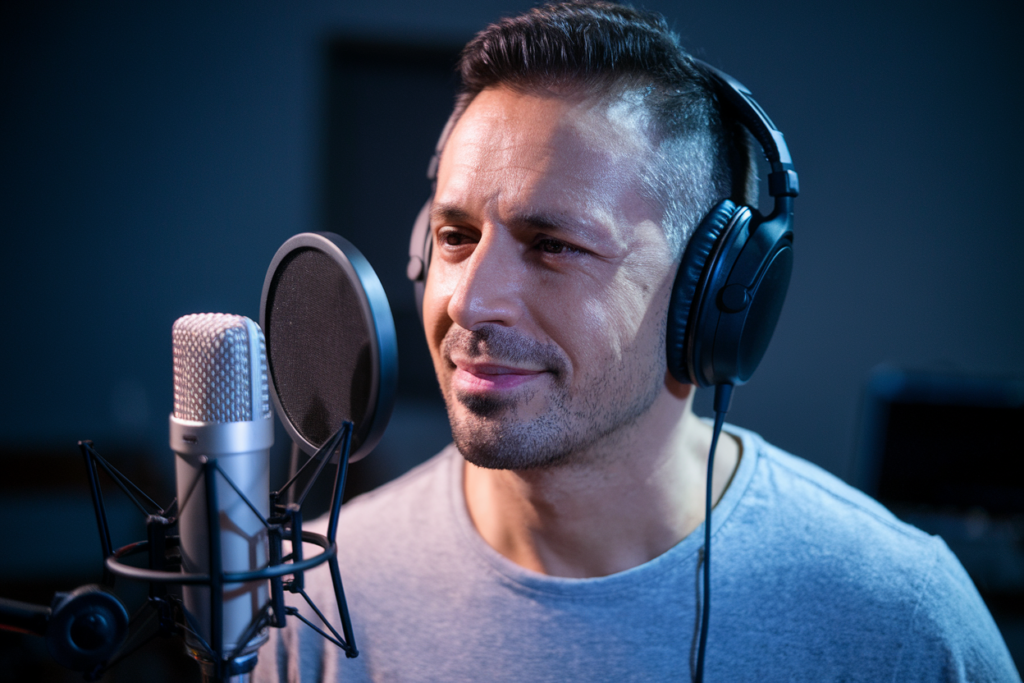Key Takeaways
- Diverse Dialectal Landscape: Turkey is home to a rich variety of dialects, each reflecting regional history and culture, from Istanbul Turkish to Southern and Eastern Anatolian dialects.
- Cultural Insights: Understanding these dialects enhances cultural appreciation and fosters deeper connections with locals during travel or interactions.
- Phonetic and Lexical Variations: Each dialect features unique phonetic traits, vocabulary, and grammatical distinctions that enrich communication and highlight local identities.
- Historical Influences: The evolution of Turkish dialects has been shaped by historical events, including the Ottoman Empire’s impact on language through Persian and Arabic borrowings.
- Impact of Urbanization: Growing cities like Istanbul promote the blending of dialects, leading to new speech patterns while potentially diluting traditional linguistic features.
- Preservation Challenges: As modernization continues, there are risks involved in preserving unique regional dialects as younger generations adopt more dominant forms of Turkish.
Ever wondered why the same word sounds so different depending on where you are in Turkey? The rich tapestry of dialectal variations across Turkey isn’t just fascinating; it’s a window into the country’s diverse culture and history. From the bustling streets of Istanbul to the tranquil villages of Anatolia, each region boasts its own unique linguistic flavor.
Understanding these dialects can be key for travelers and language enthusiasts alike. It can deepen your appreciation for local customs and help you connect with people on a more personal level. So whether you’re planning a trip or simply curious about linguistic diversity, exploring Turkey’s dialects offers valuable insights that go beyond mere words.
Overview of Dialectal Variations Across Turkey
Turkey’s linguistic landscape showcases various dialects, each with unique characteristics. These dialects, stemming from historical influences and regional diversity, enrich the Turkish language and culture.
You’ll find that Turkish dialects can be broadly categorized into several groups:
- Istanbul Turkish
Istanbul serves as the linguistic hub, where standard Turkish originates. This dialect is commonly taught in schools and used in media.
- Aegean Dialects
Aegean regions exhibit distinct variations influenced by local cultures and languages. These dialects feature specific phonetic traits and vocabulary.
- Black Sea Dialects
The Black Sea area presents unique intonations and expressions. Here, the geography shapes communication styles among communities.
- Eastern Anatolian Dialects
Eastern Anatolia showcases rich cultural heritage reflected in its dialects. These variants often include borrowings from Kurdish and Arabic languages.
- Southern Dialects
Southern regions possess their own flavor with influences from Mediterranean languages. The warmth of these communities often shines through their speech patterns.
Understanding these variations not only fosters appreciation for the local customs but also enhances interactions while traveling or engaging with Turkish speakers abroad. Each dialect carries stories of its people, making your experience in Turkey more vibrant and meaningful as you connect with locals on a deeper level.
Exploring these diverse forms of expression opens doors to cultural insights that transcend mere words; it invites you into the heart of Turkey’s identity.
Historical Context of Turkish Dialects
Turkish dialects reflect the complex history and cultural evolution of Turkey. Understanding this context adds depth to your appreciation of these linguistic variations.
Influence of Language and Culture
Language in Turkey has evolved significantly due to various historical influences. The Ottoman Empire, which lasted for over six centuries, played a pivotal role in shaping modern Turkish. Persian and Arabic had substantial impacts on vocabulary and phonetics during this period. As a result, contemporary Turkish incorporates numerous loanwords from these languages, enhancing its richness. Additionally, regional cultures contribute unique expressions and idioms that further diversify dialects across the country.
Regional Linguistic Roots
Different regions host distinct dialectal features rooted in local traditions and histories. For instance, Istanbul Turkish emerged as the standard dialect due to its status as a cultural hub; it’s often considered the most widely understood form of Turkish. Aegean Dialects exhibit influences from Greek culture owing to their geographic proximity, while Black Sea Dialects reveal characteristics shaped by mountainous terrain and fishing communities. Eastern Anatolian Dialects showcase rich storytelling traditions influenced by neighboring ethnic groups, whereas Southern Dialects reflect Mediterranean lifestyles with their own unique flair.
Exploring these roots uncovers how geography, culture, and history intertwine within the fabric of Turkey’s linguistic landscape. Each dialect tells a story—your understanding enriches interactions with locals when you travel through this diverse nation.
Major Dialect Groups in Turkey
Turkey’s dialectal landscape showcases a rich tapestry of linguistic diversity. Understanding these major dialect groups enhances your appreciation for the country’s culture and history.
Northern Dialects
Northern dialects, particularly those from the Black Sea region, feature distinct phonetic characteristics. You’ll notice unique intonations and some vocabulary that may differ significantly from standard Turkish. These dialects reflect the geographical isolation of communities and their historical influences, resulting in a vibrant local identity.
Southern Dialects
Southern dialects encompass variations found in regions like Antalya and Mersin. These dialects often exhibit Mediterranean influences, incorporating expressions typical to coastal life. The warmth of this area is mirrored in its speech patterns, where friendliness and hospitality come through in everyday conversations.
Eastern Dialects
Eastern Anatolian dialects highlight the cultural richness of the area with deep historical roots. Influences from neighboring languages contribute to specific pronunciations and vocabulary choices. When interacting with locals, you’ll appreciate how these nuances tell stories of tradition and heritage unique to each community.
Western Dialects
Western dialects include those spoken around Izmir and Aegean territories, influenced by both urbanization and regional customs. These variations often showcase lighter accents compared to other regions, making them more accessible for newcomers. Engaging with locals here provides insight into how modernity blends seamlessly with age-old traditions.
Exploring these major dialect groups not only enriches your interactions but also fosters a deeper connection to Turkey’s diverse cultural fabric. Each conversation becomes an opportunity to learn something new about this fascinating country.
Characteristics of Turkish Dialects
Turkish dialects display a rich tapestry of linguistic features that reflect the country’s diverse cultural landscape. Understanding these characteristics enhances your appreciation for Turkey’s regional identities.
Phonetic Variations
Phonetic variations in Turkish dialects significantly influence how words sound and are pronounced across regions. For example, Northern Dialects from the Black Sea region often exhibit unique vowel harmony patterns, which can alter the pronunciation of similar words found in Standard Turkish. In contrast, Southern Dialects showcase softer consonants and melodic intonations that convey warmth and hospitality. These phonetic distinctions not only create a distinct auditory experience but also enhance communication nuances among locals.
Lexical Differences
Lexical differences highlight the vocabulary variations between dialects, with each region contributing its own set of terms and expressions. For instance, Eastern Anatolian Dialects incorporate specific local terminology tied to cultural practices and traditions, enriching everyday conversation. On the other hand, Aegean Dialects may introduce loanwords from neighboring languages due to historical trade connections. Recognizing these lexical choices allows you to navigate conversations more effectively while connecting with locals on a deeper level.
Grammatical Distinctions
Grammatical distinctions across Turkish dialects further illustrate their uniqueness. Certain dialects may employ different verb conjugations or noun cases that can differ from Standard Turkish usage. For example, some Western Dialects might favor simpler sentence structures over more complex forms seen in Eastern varieties. This grammatical flexibility adds depth to language learning and enhances comprehension during interactions with native speakers.
Understanding these characteristics equips you with valuable insights into Turkey’s linguistic diversity while fostering meaningful connections during your travels or engagements within local communities. Each dialect offers a glimpse into the heart of its people and culture.
The Impact of Urbanization on Dialectal Variations
Urbanization significantly affects dialectal variations across Turkey. As cities grow, people from diverse regions converge, leading to a blending of dialects and linguistic influences. This urban mix often results in the emergence of new speech patterns, where local expressions intertwine with urban vernacular.
You might notice that Istanbul Turkish has become more prominent due to its status as a cultural and economic hub. Its influence spreads beyond the city, impacting communication styles in surrounding areas. Residents adopt elements from this dominant dialect, which can dilute traditional pronunciations and vocabulary specific to their home regions.
Additionally, rapid modernization introduces new terms into everyday language. Words related to technology and contemporary life replace older expressions, reflecting shifts in lifestyle and communication needs. For example, younger generations may prefer using modern slang over regional idioms when interacting with peers.
Moreover, social media accelerates the spread of these changes. You see how platforms facilitate interactions among speakers from different backgrounds. This exchange promotes hybrid forms of language that blend various dialects while potentially overshadowing unique regional traits.
While urbanization fosters unity through shared language experiences, it also risks erasing distinct dialectal features. Communities might face challenges preserving their linguistic heritage as younger speakers gravitate toward more widely understood variants.
In essence, urbanization reshapes Turkey’s rich tapestry of dialects by merging voices from various backgrounds into a dynamic linguistic landscape. Understanding these developments enhances your appreciation for the intricate ways culture and language evolve together in an ever-changing world.
Conclusion
Exploring the dialectal variations across Turkey opens a window into the country’s vibrant cultural tapestry. Each dialect not only reflects regional influences but also tells unique stories shaped by history and geography.
As you navigate through Turkey, embracing these linguistic nuances will enhance your travel experience. You’ll find that understanding local dialects fosters deeper connections with the people you meet, enriching your journey far beyond mere sightseeing.
Whether you’re a language enthusiast or simply curious about Turkish culture, delving into its diverse dialects promises to deepen your appreciation for this fascinating nation. Embrace the richness of Turkey’s linguistic landscape and let it guide your adventures in this captivating country.
Frequently Asked Questions
What are the main dialects of Turkish?
The main dialects of Turkish include Istanbul Turkish, Aegean Dialects, Black Sea Dialects, Eastern Anatolian Dialects, and Southern Dialects. Each group reflects unique cultural influences and geographical characteristics.
Why is it important to understand Turkish dialects?
Understanding Turkish dialects enhances appreciation for local customs and fosters personal connections with people in Turkey. It allows travelers and language enthusiasts to engage more meaningfully with the culture.
How has the Ottoman Empire influenced modern Turkish?
The Ottoman Empire significantly impacted modern Turkish by introducing Persian and Arabic loanwords into the language. This historical context adds depth to the various dialects spoken today.
What are some characteristics of Northern Dialects in Turkey?
Northern Dialects, particularly from the Black Sea region, feature distinct phonetic characteristics like unique vowel harmony. These variations reflect the geographical isolation of communities in this area.
How has urbanization affected Turkish dialects?
Urbanization has led to a blending of dialects as people from diverse regions converge in cities. Istanbul Turkish has become more prominent, influencing communication styles and diluting traditional pronunciations.
Are there grammatical differences between Turkish dialects?
Yes, there are grammatical distinctions among different Turkish dialects, including variations in verb conjugations and sentence structures that can affect communication across regions.
What role do regional cultures play in shaping dialects?
Regional cultures contribute unique expressions and idioms that diversify each dialect. Local customs shape vocabulary choices that vary significantly from one area to another.
How does social media impact language use in Turkey?
Social media accelerates changes in language use by promoting hybrid forms that blend various dialects. Younger generations often favor modern slang over traditional regional idioms due to digital interactions.







